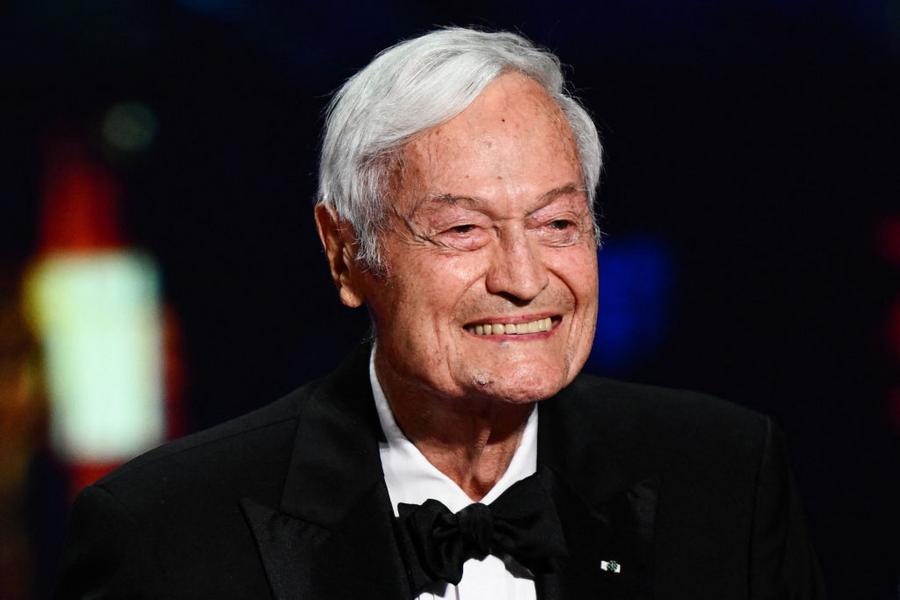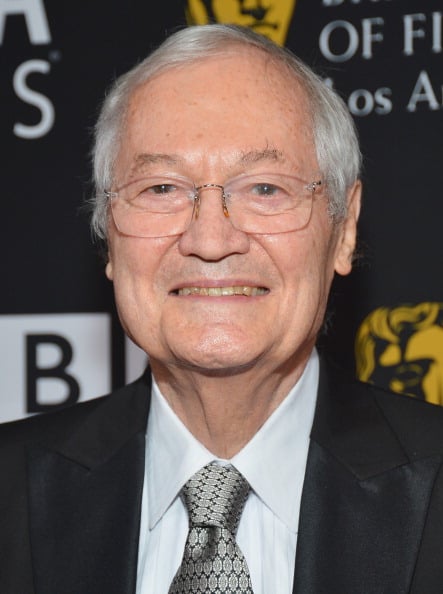What was Roger Corman's Net Worth?
Roger Corman was a prolific movie director and producer who had a net worth of $200 million at the time of his death. Roger Corman died on May 9, 2024 at the age of 98. The full extent of Roger Corman's net worth was revealed thanks to a long-running legal battle with his sons. The sons first sued their father in 2009 over trusts that at that point were valued at between $120 million and $160 million. The sons sued again in 2018 to prevent the sale of their father's film library. The sons claimed that the library was actually part of trusts that had been set up for them in 1978, and therefore they had the right to veto the sale. The lawsuit was settled in 2020 on undisclosed terms.
Roger Corman was a film director, producer, and actor who was a pioneering figure in the evolution of independent film. Among the numerous films he directed were "The Little Shop of Horrors," "House of Usher," "The Intruder," "The Wild Angels," and "The Trip," low-budget films that eventually attained cult status. Corman was also renowned for handling the US distribution of many films by prominent international filmmakers, and for mentoring several fledgling directors who would become central to the New Hollywood movement.
Early Life and Education
Roger Corman was born on April 5, 1926 in Detroit, Michigan to Anne and William. He had a younger brother named Gene who also worked in the film industry. Corman was educated at Beverly Hills High School, and then at Stanford University, where he majored in industrial engineering. However, realizing engineering wasn't for him, he enlisted in the V-12 Navy College Training Program. After serving in the Navy from 1944 to 1946, Corman returned to Stanford and earned his BS degree in industrial engineering. Later, in the early 1950s, he studied English literature at the University of Oxford.
Career Beginnings
In 1948, Corman worked briefly at US Electrical Motors in Los Angeles. He ultimately quit after four days, and found work in the mail room of 20th Century Fox. Corman worked his way up in the film industry over the subsequent years, becoming a story reader in 1950. However, after failing to receive any credit for the ideas he provided for the film "The Gunfighter," he left 20th Century Fox. While trying to reestablish himself in the film industry, Corman wrote a script and sold it to William F. Broidy at Allied Artists. The script was turned into the film "Highway Dragnet," which came out in 1954. Corman subsequently used his script fee and personal connections to raise money to produce the science-fiction film "Monster from the Ocean Floor." After that, he produced the crime drama "The Fast and the Furious."

(Photo by CHRISTOPHE SIMON/AFP via Getty Images)
Film Directing
Corman's first film as a director was the Western "Five Guns West," which was released in 1955. He followed that with another Western, "Apache Woman," and with the post-apocalyptic science-fiction film "Day the World Ended." Corman subsequently directed "Swamp Women," "The Oklahoma Woman," "It Conquered the World," and "Gunslinger." In 1957, he had eight films released in theaters, including "Attack of the Crab Monsters," "Rock All Night," "Teenage Doll," and "Sorority Girl." The following year, Corman earned his first real critical praise for his film "Machine-Gun Kelly," a biopic of the eponymous gangster starring Charles Bronson in his first leading role. Corman closed out the decade with the films "I Mobster," "A Bucket of Blood," and "The Wasp Woman." Kicking off the 1960s, he had a critical and commercial success with "House of Usher," based on Edgar Allen Poe's short story "The Fall of the House of Usher." The film was so successful that it inaugurated a cycle of Corman films based on Poe stories. Also in 1960, Corman directed the horror comedy "The Little Shop of Horrors," which went on to become a cult classic and spawn a hit musical.
In 1962, Corman released his film "The Intruder," based on the novel by Charles Beaumont and starring William Shatner in one of his earliest roles. He subsequently directed such films as "The Young Racers," "The Terror," "The Haunted Palace," and "X: The Man with the X-Ray Eyes." In 1964, Corman directed his final two films in the Poe cycle, "The Masque of the Red Death" and "The Tomb of Ligeia." Also that year, he directed the war film "The Secret Invasion." After not directing anything in 1965, Corman returned in 1966 with the outlaw biker film "The Wild Angels," starring Peter Fonda and Nancy Sinatra. The film debuted at the Venice Film Festival and went on to become a major commercial success, launching the so-called "biker movie." Corman next directed "The St. Valentine's Day Massacre" and "The Trip," the latter of which kicked off the psychedelic film craze. In 1968, he did uncredited directing on "The Wild Racers," and in 1969 he directed "Target: Harry" under the pseudonym Henry Neill. Commencing the 1970s, Corman directed the hit crime film "Bloody Mama" and the financial flop "Gas-s-s-s." After those, he finally directed the Red Baron project he had wanted to make for many years: it was released in 1971 as "Von Richthofen and Brown." Corman didn't do much directing after that; his final film as director, "Frankenstein Unbound," came out in late 1990.

Frazer Harrison/Getty Images
Producing and Distribution
Beyond his own films, Corman was prolific in producing and distributing films by other filmmakers. In 1959, he co-founded the production and distribution company the Filmgroup with his brother Gene. The first movies from the company were "High School Big Shot" and "T-Bird Gang." Later, in 1970, Corman and his brother co-founded the production and distribution company New World Pictures, which had great success early on with the films "Angels Die Hard," "The Student Nurses," and "The Big Doll House," among others. "The Student Nurses" spawned a cycle of nurse films, while "The Big Doll House" led to a series of women-in-prison movies. New World went on to produce the hit "Death Race 2000," which inspired a series of car chase movies. Corman and New World also handled the US distribution of many films by major international directors, such as Ingmar Bergman, François Truffaut, Federico Fellini, Joseph Losey, and Akira Kurosawa.
Among the later notable films produced by New World was the 1980 space opera "Battle Beyond the Stars," which was the company's most expensive film at the time. In early 1983, Corman sold New World to a consortium of three lawyers. He subsequently founded a new production company, Millennium Films, which was soon renamed New Horizons. In 1985, Corman founded the distribution company Concorde Pictures. Later in his career, he produced several creature films, many of them for the SyFy Channel.
Personal Life and Death
In 1970, Corman married Julie Halloran. They had four children and remained together until Corman's passing.
On May 9, 2024, Corman died at his home in Santa Monica, California. He was 98 years of age.
/2012/04/roger.jpg)
/2019/11/Robert-Towne.jpg)
/2023/10/Robert-Altman.jpg)
/2014/06/GettyImages-154544018.jpg)
/2011/04/richard.jpg)
:strip_exif()/2020/06/taylor.png)
/2014/09/Manoj-Kumar.jpg)
/2020/09/fabio.jpg)
/2023/10/Robert-Irwin.jpg)
/2010/03/GettyImages-146012097.jpg)
/2014/06/GettyImages-855956732.jpg)
/2011/08/Troy-Landry-1.jpg)
/2010/03/GettyImages-911943150.jpg)
/2012/12/Jeanine-Pirro.jpg)
/2019/02/Sam-Seder.jpg)
/2010/03/lf2.jpg)
/2013/01/rande-gerber-2.jpg)
/2012/04/roger.jpg)
/2019/11/Robert-Towne.jpg)
/2021/04/Peter-Fonda.jpg)
/2014/03/me.jpg)
/2014/06/GettyImages-154544018.jpg)
/2015/07/Lawrence-Kasdan-1.jpg)
/2012/03/Joss-Whedon.jpg)